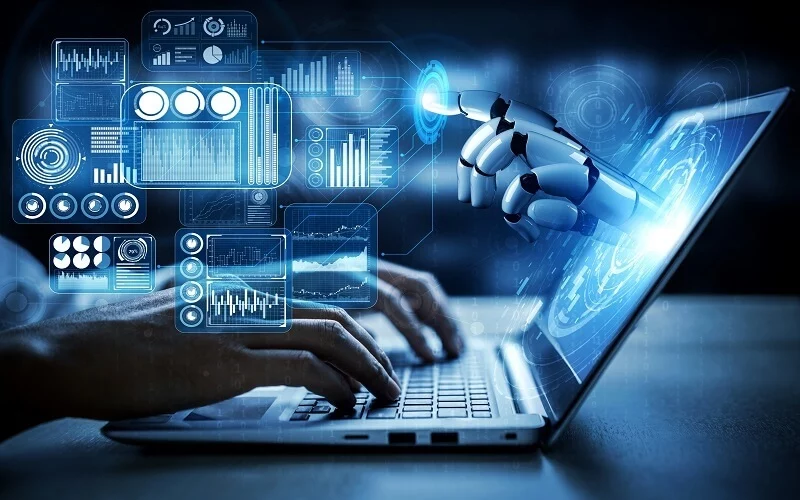People want to be better with every passing day and grow (personally and professionally) to lead a better lifestyle. It’s human nature to choose from what is best for them.
Businesses are like people. They want to grow out of traditional ways and means to manage their operations in the changing scenario where remote work model, business continuity strategies, and digitization play a major role.
For instance, many of them have now realized the importance of RPA (Robotic Process Automation)- the technology that enables businesses to automate the business operations and manual workflow, save time & costs.
Just like a leading BPO that achieved 90% faster throughput for international tax compliance. Or a leading pharma company that chose RPA to standardize the document management and invoice dispersal process eliminating manual data processing.
So, what is next?
Now the innovators want businesses to step into the future and automate not only the rule-based repetitive tasks but also the long and complex business processes powered. And therefore, Hyperautomation comes into the picture.
Hyperautomation – The Next Level Of Automation
Hyperautomation is the marriage of advanced technologies such as RPA, artificial intelligence (AI), machine learning (ML), etc., that encourages businesses to automate end-to-end operations and augment humans.
Gartner that awarded Hyperautomation no.1 tech trend status for the year 2020 ( read more about it here) says, Hyperautomation constitutes the widest range of technology and tools that can be automated, but also refers to the sophistication of the automation (i.e., discover, analyze, design, automate, measure, monitor, reassess.)
Hyperautomation often results in the creation of a digital twin of the firm enabling a 360degree view of operations, processes, and key performance indicators interacting to drive value and providing real-time & continuous intelligence.
The global Hyperautomation market size is projected to reach USD 24.4 Million by 2026, from USD 8.3 Million in 2020 growing at a CAGR of 19.8% during 2021-2026.
This prediction shows the belief of the market experts in the lucrative benefits that Hyperautomation offers. It includes eliminating legacy systems and integration issues, expensive human errors, time inefficiencies due to manual reporting, absence of structured automation, increase in operational costs, and much more.
Hyperautomation Transforming Industries Globally
However, businesses can capitalize on such benefits only when it holds relevance to their domain. The investors need to ask themselves:
- Is it right for me?
- How is it making an impact on global players like me?
To answer such questions, check out the list of industries and domains ready to make the most of Hyperautomation.
Finance
The finance workforce spends most of their time performing manual and repetitive tasks with laggard systems leading to expensive manual errors.
For instance, the tax teams indulge in the exhaustive process of creating and updating reports. Hyperautomation powered with data analytics digitizes the tax functions and enables to interpret taxation trends, extract meaningful data, examine variations and predict future collections. It gets easier to perform data collation, alterations, reconciliations, sorting, processing, e-filing, computations, filing refund claims, get the audit data ready, and so much more.
Apart from these operations, banks and insurance firms visualize greater potential with hyperautomation in other back-office operations, application screening, regulatory reporting, payment operations, identifying fraudulent activities, and much more with the power of AI, machine learning & advanced analytics.
Healthcare
Covid-19 has brought major changes to how healthcare services are delivered. The healthcare providers are, therefore, more inclined towards adopting fast and efficient solutions to streamline:
- Back-office operations for optimized operational efficiencies
- Billing operations to collect and consolidate bill details from each department without any manual intervention
- Insurance and claims settlements using Intelligent Automation with AI and RPA
- Medical transcription to convert speech requests into text with advanced machine learning algorithms
- Building clinical analytics capabilities with real-time data
Business Processing Outsourcers – BPO
Besides healthcare and finance, Hyperautomation will also open up new opportunities in BPO that specialize in handling customer queries on diverse subjects through email, call, message, social media, and other channels.
Plagued with human intervention challenges, Hyperautomation can be beneficial in the following ways:
- Employees retrieve and upload customer-related details into multiple systems, diverting them from customer problems and wasting their time in the repetitive task. The call handling process can be improved with smart automation.
- Again, to improve the quality of interactions and offer custom services to the customers, AI can analyse people, their needs, and behavior to perform critical operations such as claim settlements reducing the time of problem resolution.
- Advanced analytics technologies can help in building better customer relationships, reducing attrition rates, and enhancing customer retention.
Logistics & Supply Chain
Various MNCs claim that COVID-19 poses the biggest risk to their supply chains.
Hyperautomation has the potential to be a raging trend mitigating such risks in the supply chain and transforming unanticipated as mentioned below:
- AI, Machine learning, and RPA can enhance the visibility of systems involved and enable businesses to make real-time data-driven decisions.
- These continuous learning systems fetch the details from the supply chain processes and update the automated systems round the clock. Therefore, building and deploying brand new process models and strategies takes less time to strengthen process management.
- It must also be noted that saving a couple of seconds may not look like a great job done but when performed collectively during different operations, a significant improvement can be expected.
- Automating labor-intensive data entry, generating status alerts, performing system-to-system audit operations, optimizing transportation & warehouse management systems can be other disrupted operations.
Retail
In 2019, e-retail sales accounted for 14.1% of all retail sales globally which is expected to reach 22% in 2023.
RPA has done wonders in the retail sector enhancing productivity, fulfilling customer expectations, delivering accurate outcomes, cutting costs, and boosting revenue.
Retail is now prepared to advance towards hyperautomation to optimize order management, payment operations, transport management, warehousing, and inventory monitoring, risk mitigation, and data monitoring.
Pricing analytics is another critical area. For instance, tracking the competitiveness of the sites, and reporting fluctuation in the market prices every day becomes easier when the right technologies are put to action. This eventually helps in analysing the customer behavior and hence, enables the marketers to improve decision making.
Apart from these industries- Finance, insurance, healthcare, BPO, logistics & supply chain, and retails, other domains such as human resource, construction, automobile, etc., are likely to be disrupted.
So, what are your plans? Are you still looking for more insights into hyperautomation? Cygnet Infotech has the right expertise, experience, and deep industry knowledge that will help you realize the potential of hyperautomation and other emerging technologies suitable for your business.








